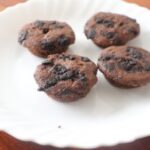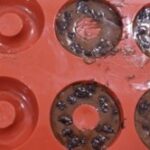CLIENT
PROTEIN DONUT
OUR ROLE
We redefined fast-casual loyalty
Today’s Task
What We did Today?
protein Donut
Event: Today, I had a plan to work on the formulation of Protein Donut
How I felt it (initially before executing the actual task):
I always enjoy product formulation, but the idea of creating a high protein donut was delightful. It felt like perfect blend of challenge and creativity. I love experimenting with food that help me to combine nutritional science with sensory science.
Actual Task: Product development
What I did today?
In today’s-controlled lab session, I initiated a formulation trial for high-protein baked donuts as a functional snack. The goal was to validate initial process parameters for a donut base rich in protein yet compliant with clean-label formulation standards.
Step 1: I prepared the dry mix in a planetary mixer by combining wheat-based flour with a whey protein isolate at a pre-determined ratio. The blend also included chemical leavening agents (baking powder), flavour enhancer (sodium salt), and a binding agent to aid in matrix integrity.
Step 2: In a separate beaker (batch A), I prepared the wet phase using pasteurized egg whites, a controlled quantity of low-glycemic sweetener, and a small volume of vanilla extract. In batch B, as an optional addition of thick Greek yogurt was trialed to test its impact on moisture retention and crumb softness.
Step 3: I mixed both dry and wet phases using a low-shear paddle attachment to prevent protein denaturation. I have continuously monitored batter viscosity for flowability and adjusted the formulation to achieve a semi-thick, pourable consistency for molding.
Step 4: Then, I transferred the batter into non-stick silicone donut molds to approximately 75% capacity for leavening.
Solution
What I did Today

Image 1

Image 2

Image 3
What I Learned
- The presence of whey protein isolate significantly alters batter hydration dynamics leading to reduced flow and increased thickness. It also enhances the donut’s overall structure, texture, and facilitates ingredient binding.
- To prevent post-bake dryness, protein-dense formulations require careful balance of humectants and binders.
- Employing lower baking temperature with long time, optimized mixing and leavening rate, and sufficient batter hydration prevents faster crust formation and enhances uniform expansion.
🧁 Outcome
The high-protein donuts demonstrated strong shape integrity, even rise, and desirable color development. Sensory analysis indicated an appealing vanilla-forward aroma and mild sweetness. However, the internal crumb was moderately dry, suggesting suboptimal moisture retention.
✅ What Went Well
- Operating equipments (planetary mixer, silicone molds, convection oven) within target parameters helped me to yield consistent results.
- I was able to meet my healthy formulation goal with desired flavour profile and macro-nutrient integration (11g protein per unit).
- I didn’t observe protein separation or structural collapse during baking.
⚠️ What Could I Have Done Better
- My primary concern was donut’s texture. So, I should have planned for further trials by altering the current formulation with the following:
- Alternate protein blends (e.g., plant-based isolates or hydrolysates)
- Use of natural emulsifiers or polyols for moisture stabilization
- Controlled cooling trials to assess post-bake drying rates
- I should have initiated shelf-life simulation studies with accelerated aging to monitor water activity and microbial stability.






